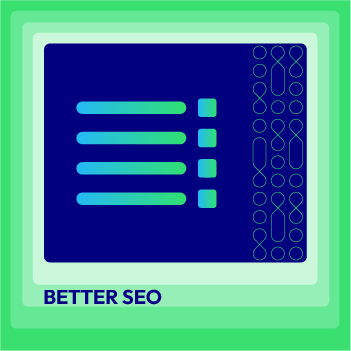Mobile pages that load 1 second faster see up to a 27% increase in conversion rate

Walk down the street, and you will likely see people walking around with their eyes fixed on their mobile phones or with their fingers glued to their tablets. In these days and age, mobile devices are becoming essential shopping tools for more customers than ever before. To find out the nuances of mobile site shopping, Google partnered with SOASTA, a leading and analytics company. The key finding of this case study is that mobile page that loads 1 second faster see up to a 27% increase in conversion rate.
If you are still wondering whether the statement is true or false, spend a few minutes to read through this article. I am sure you will find the right answer for you. Do you know what conversion rate is? Do you want to find the relation of mobile page speed and the conversion rate? Jump into reading this article right now!
What is the conversion rate?

Conversion rate is calculated by dividing the number of unique visitors turned into customers by the number of total unique visitors. In other words, a conversion happens when a website visitor converts to being a user or buyer of the product or service that site offers. It is one of the most accurate and useful metrics to determine how effective your marketing activities are. A high conversion rate means a strong return to investment. Improving the conversion rate is a challenging and vital task for every business.
How does site speed affect conversion rates?

Every business, from local stores to international brands, wants to grow. While there are a variety of growth strategies, there is one area where almost every company has room to enhance: the mobile site. Take a look at surprising statistics from Google:
- 46% of consumers prefer to use their smartphones to complete their entire online shopping process from researching to buying.
- 54% of people say that they will be more frustrated as the mobile site loading time increases.
- 20% of conversions can drop for every second delay in mobile page load.
This trend gives any business with a simple choice: either offer customers the kind of mobile experience they expect or be prepared to see those customers go elsewhere. The good news is if a slow mobile site experience drives customers away, a fast mobile site experience can attract and keep them. In other words, the mobile site speed affects significantly to conversion rate. When the mobile page loads slower, conversion rate suffers, and vice versa. A low conversion rate results in decreasing your sales as well as your revenue. Hence, the mobile site speed can slow or grow your business. Businesses, even beyond e-commerce stores, should consider the mobile site as a growth driver.
The notable thing is that you can optimize your mobile page loading to increase the conversion rate and boost your revenue just via simple steps. How can you do that? Keep calm and read on!
How to optimize the mobile page speed?
It is no doubt that mobile page speed can make your business win or lose shoppers. The question is how the business can invest wisely on mobile speed improvement? Here are some tips for optimizing your site speed:
Test your site speed
The first thing you should do is testing how fast your mobile site is. You probably think it loads just fine, but actually, it could be slower than you think. Test My Site from Think With Google is one of the best tools to help you understand, measure, and benchmark your mobile site speed. All you need to do is entering your domain into the search box, and press the Enter key. Interestingly, you can generate your free report containing the detail results from your test, and share it with your team to get started.
Make responsive design

Now it is time for you to rethink about your site design with a mobile-first mindset. Typically, business sites have two versions, one for mobile users and one for desktop users. A mobile version is easily recognized by the “m.” subdomain. In this case, the mobile and desktop sites are two completely different sites operating independently from one another.
Mobile, however, is separate. It means you would have one website for desktop users and another for mobile users. If you are on a budget and want to provide the best mobile experience for your users, it is probably a good investment to use a responsive design for your website.
Responsive design means you have one website that adjusts automatically to fit any screen size. So both your desktops and mobile users can look at the same site in different devices. A website with responsive design typically loads faster than mobile-only sites. Additionally, it also provides several benefits. Mobile-friendliness is now a significant Google ranking factor. Hence, you can gain a massive SEO advantage with responsive web design. Once your site provides better experiences for site visitors, the conversion rate likely increases resulting in your higher revenue and business growth.
Optimize the images
There is no doubt that productive visual interactions and attractive images play an essential role in your mobile site. Their presence helps increase engagement, improve user experience, and conversion rate. However, sometimes, beautiful marketing imagery can make your mobile website speed slow if not managed carefully. That increases the risk of fewer conversions leading to missed revenue opportunities.
Re-evaluating the images is a great start to boost the speed of your mobile site. Here are some more technically-minded tips helping your business reap the benefits of image optimization while ultimately providing a faster mobile experience for your customers.
Prioritize the images in order of importance
You should consider whether the images on your site are all necessary. Sure, high-resolution photo look eye-catching but can it help to convey your brand message you are trying to get across? By removing unnecessary high-resolution images and GIFs, you can reduce maintenance and complexity for your mobile site. The designers and developers should work together to ensure the perfect balance of aesthetics and mobile site performance.
Choose a proper image format

To make your mobile page speed as fast as possible, you need to format your image correctly. For instance, saving a photographic and translucent image as a WebP rather than a JPEG can cut its file size by 30%, without loss of image quality. Below are recommendations for you to choose the proper image format to save some bytes from your page site:
- JPEG: Photos with no transparency
- PNG: Transparent backgrounds
- SVG: Scalable icons and shapes
Selecting a useful image format requires close technical collaboration between developers and designers, but the mobile speed enhancements were well worth these efforts.
Compress and resize the image
Compressing and resizing images are the most basic but beneficial optimizations tools to help you achieve the bytes savings and mobile site performance enhancements. Best of all, with the support of technology, the images can be optimized automatically. For instance, it can resize and compress your hundreds or thousands of photos automatically with a script. As a result, designers can reduce lots of manual work and have more time for more exciting work.
Accelerated Mobile Pages (AMP) is an open-source HTML library that makes your page fast to the point where the load time feels almost instant. When building it, the custom image tags make many of these same optimizations automatically. Thanks to Google AMP Cache, maximum image dimensions are limited to prevent browser memory problems and poor responsiveness.
The ultimate duo of AMP is Progressive Web Apps (PWAs). They are modern websites using state-of-the-art technologies to provide fast, smooth, reliable, and secure web experiences. AMP and PWA technologies can speed up your mobile site speed, increase conversion rate, ultimately boost your bottom line and unlock your business.
Use loading techniques

After optimizing your images, it is time for you to use loading techniques to build a fast mobile site, regardless of users’ unique browsing conditions.
Once visitors first come to your page, they will usually see all the content on the top part of the page, referring to above the fold content. So why load your whole page all at once? Why not prioritize to load only the above fold content and then load the rest at the moment of need? This is the reason you should use a loading technique called lazy loading, which speeds up your mobile page and reduce load time significantly.
To avoid displaying a space where large images are loading, you should implement a progressive loading technique. It works by posting a picture in low-resolution, and progressively improve itself over time. Accommodating the lazy loading technique, and progressive loading gives the site visitors the feeling that progress is being made and will keep them stay on the site longer.
Keep your site lightweight
Making a beautiful and eye-catching design is the want of any online business. However, you do not need too many images and elements to make your site stand out. The higher the number of page elements, the greater weight, and complexity of the page. In reality, mobile visitors often pay attentions on speed rather than all the bells and whistles you want to add to your website. According to the data of Google, once the number of elements - text, titles, images - on a page increases from 400 to 6000, the probability of conversion decreases 95%.
To tackle this problem, online businesses should set a performance budget for each page. Meaning that, for instance, you can decide to load your site within two seconds. Using that benchmark, you can remove unnecessary page elements that make the load time exceed that limit. Besides, you can also monitor and audit all the third-party scripts on your website that affect to your mobile page loading.
Final Words
Alright, now, do you genuinely understand the mutual relationship between mobile page speed and conversion rate? There is the fact that business growth requires not only a mobile presence but also the speed of mobile experience that customers want. Improving your mobile page loading inevitably rockets the conversion rate. This introduces the flood of new customers, boost your sale, and grow your business as well. If you have not cared about mobile yet, I urge you to start today.







![Top 20+ Must-have Shopify Apps for 2025 [Free & Paid] - Mageplaza](https://cdn2.mageplaza.com/media/blog/must-have-shopify-apps/top-must-have-shopify-apps.png)
![[2025 Updates] Top 10+ Upsell Apps for Shopify - Mageplaza](https://cdn2.mageplaza.com/media/blog/best-upsell-shopify-app/cover.png)